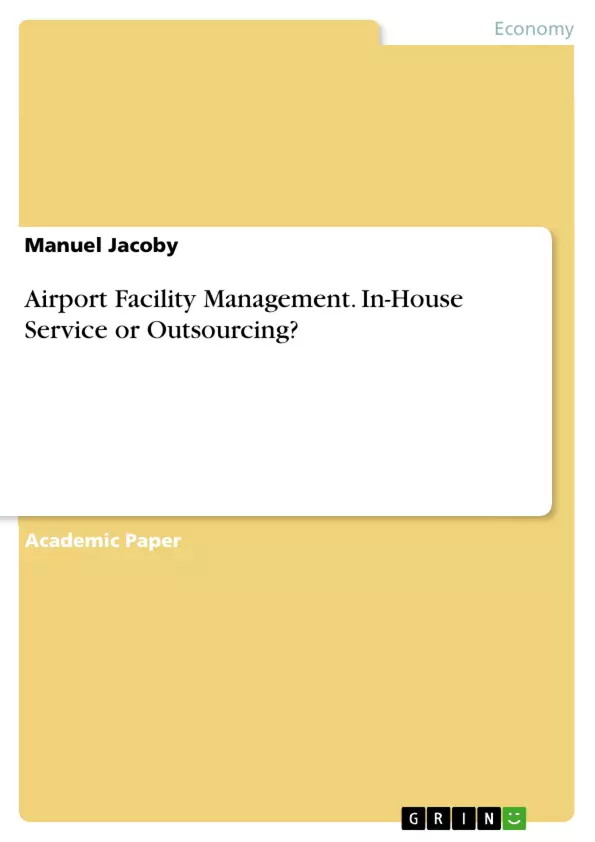Many airports are privatized and thus have to act according to the desires of stakeholders, the management has the obligation to make the core business run smoothly and efficiently in order to reach satisfying results. This paper deals with airport facility management and its possible alternatives including crucial factors. At first, the problem and background concerning the issues of outsourcing or keeping in-house AFM is presented. Additionally, the scope of AFM is displayed. In the second stage, alternatives and solutions are presented and analysed. It is figured out what has to be considered most importantly in order to shape a convenient solution. The conclusion will highlight the most important findings of the paper.
Inhaltsverzeichnis (Table of Contents)
- AIRPORTS AND FACILITY MANAGEMENT
- AIRPORTS
- FACILITY MANAGEMENT
- SCOPE OF AIRPORT FACILITY MANAGEMENT
- IN-HOUSE VS. OUTSOURCING
- AIRPORT FACILITY MANAGEMENT APPROACHES
- RETAINING SERVICE IN-HOUSE
- OUTSOURCING
- MANAGING RISKS
- PRINCIPAL-AGENT THEORY
- MONITORING AND MEASURING THE LEVEL OF SERVICE (PERFORMANCE)
- CONTRACTS AND SERVICE LEVEL AGREEMENTS
- CONCLUSIONS
Zielsetzung und Themenschwerpunkte (Objectives and Key Themes)
This seminary paper examines the decision of whether to outsource or retain in-house Airport Facility Management (AFM) services. It aims to analyze the key factors involved in this decision, including the scope of AFM, relevant risks, and possible solutions. The paper explores the benefits and drawbacks of each approach, providing insights for effective management decisions.
- The scope of AFM and its impact on airport operations
- The economic and operational considerations influencing the outsourcing decision
- The risks associated with outsourcing AFM and strategies for managing them
- The importance of clear contracts and service level agreements in successful outsourcing
- The role of stakeholder interests and market dynamics in AFM decisions
Zusammenfassung der Kapitel (Chapter Summaries)
Chapter 2 provides an overview of airports and their facility management. It examines the current market situation and the scope of AFM, highlighting the increasing demand for operational effectiveness and efficiency. This chapter lays the foundation for understanding the outsourcing decision.
Chapter 3 delves into the different approaches to AFM: retaining services in-house or outsourcing. It explores the advantages and disadvantages of each approach, emphasizing the importance of managing risks. This chapter focuses on the theoretical frameworks and practical considerations for effective decision-making.
Schlüsselwörter (Keywords)
Airport Facility Management (AFM), outsourcing, in-house, principal-agent theory, service level agreements (SLAs), contracts, risk management, stakeholder interests, market dynamics, operational efficiency, economic considerations, competitive environment, aviation industry.
- Arbeit zitieren
- Manuel Jacoby (Autor:in), 2019, Airport Facility Management. In-House Service or Outsourcing?, München, GRIN Verlag, https://www.grin.com/document/985639



